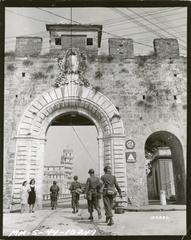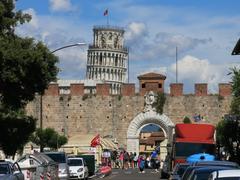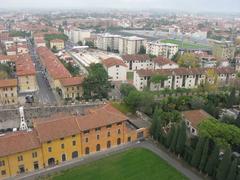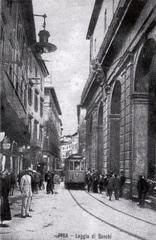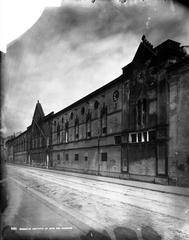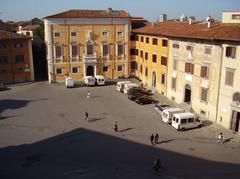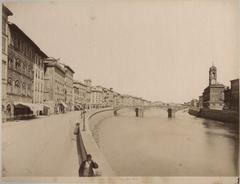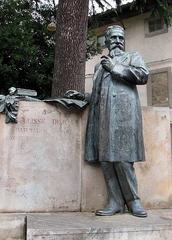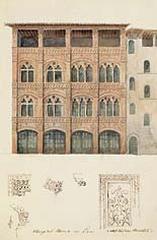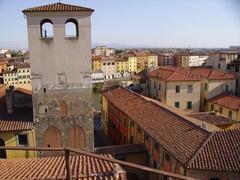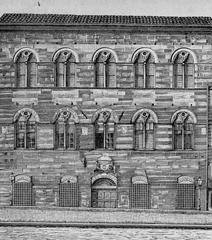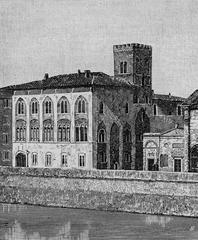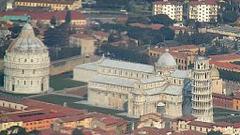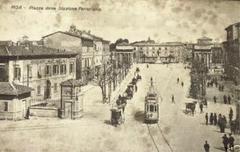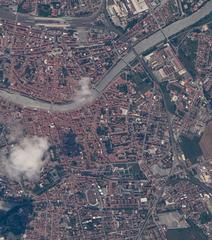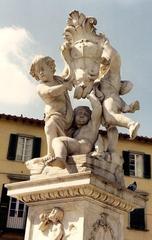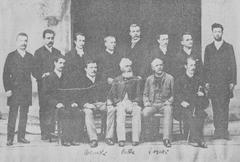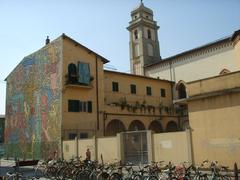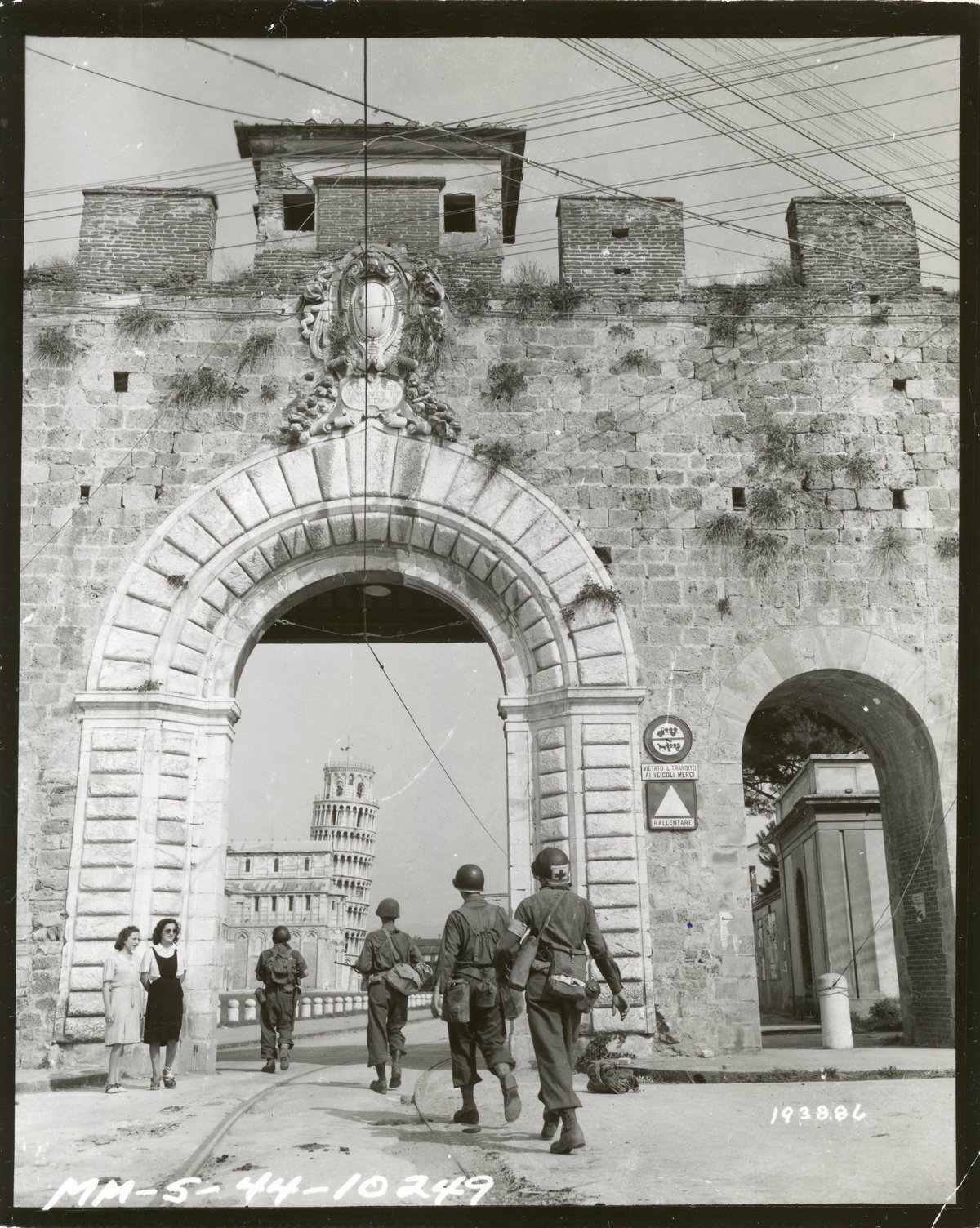
Comprehensive Guide to Visiting Piazza del Duomo, Pisa, Italy
Date: 01/08/2024
Introduction
Nestled in the heart of Pisa, Italy, the Piazza del Duomo, also known as the Square of Miracles, is a monumental complex celebrated for its stunning architecture and rich history. This UNESCO World Heritage Site is a treasure trove of medieval masterpieces that have captivated visitors for centuries. The square’s most iconic structures include the Cathedral of Santa Maria Assunta, the Leaning Tower of Pisa, the Baptistery of St. John, and the Camposanto Monumentale. Each of these architectural marvels tells a unique story of Pisa’s past, reflecting the city’s evolution from a powerful maritime republic to a modern tourist destination (UNESCO).
The construction of the Piazza del Duomo began in the mid-11th century, marking the height of Pisa’s prosperity and influence in the Mediterranean. The Cathedral, consecrated in 1118, is a prime example of Romanesque architecture, showcasing intricate marble designs and golden mosaics depicting biblical scenes. The Leaning Tower, famous for its unintended tilt, began construction in 1173 and has since become a global icon. The Baptistery, with its remarkable acoustics, and the Camposanto, home to an extensive collection of frescoes, complete this architectural ensemble (Voyage Tips).
This guide aims to provide you with comprehensive information on the history, significance, and visitor experience of Piazza del Duomo. Whether you’re a history buff, an art enthusiast, or a casual traveler, this guide will help you make the most of your visit to this remarkable site.
Table of Contents
- Introduction
- Historical Background of Piazza del Duomo, Pisa
- Visitor Information
- Preservation and Restoration Efforts
- The Role of Photography
- Cultural and Religious Significance
- Notable Artworks and Artifacts
- Visitor Experience
- FAQ Section
- Conclusion and Call to Action
Historical Background of Piazza del Duomo, Pisa
Origins and Early Construction
The Piazza del Duomo is a testament to Pisa’s architectural and historical heritage. The construction of the square’s most iconic structure, the Cathedral of Santa Maria Assunta, began in 1063, funded by spoils from Pisan expeditions to Sicily, particularly Palermo (Voyage Tips). Consecrated in 1118, the cathedral marked the start of a series of constructions that define the square today.
The Leaning Tower of Pisa
The Leaning Tower of Pisa, originally intended as the cathedral’s bell tower, is perhaps the square’s most famous structure. Construction, which began in 1173, was interrupted frequently due to wars and subsidence issues, extending over 200 years (Mad Traveller). The tower’s signature tilt, caused by an unstable foundation, became apparent during its construction and has since defined its global allure. The tower currently leans at an angle of approximately 3.97 degrees.
The Baptistery of St. John
Adjacent to the cathedral is the Baptistery of St. John, dedicated to baptisms. Its construction began in 1152 and was completed in 1363, featuring a blend of Romanesque and Gothic architectural styles. The base of the building is Romanesque, while the upper sections are Gothic, and it is renowned for its acoustics, where a single voice can echo clearly throughout the space (Voyage Tips).
Camposanto Monumentale
The Camposanto Monumentale, or the Monumental Cemetery, founded in 1278, lies to the east of the piazza. This sacred site houses an extensive collection of frescoes by notable artists such as Orcagna, Vasari, and Ghiberti, and serves as the final resting place of prominent figures including the poet Guido d’Arezzo (Mad Traveller).
Evolution of the Piazza
Initially, the structures within the Piazza del Duomo were seen as integral parts of a religious complex. Until the 17th century, the Leaning Tower was depicted as part of the cathedral, marking liturgical hours. However, from the 18th century, the tower began to be viewed more as an isolated marvel, coinciding with the rise of the Grand Tour and modern tourism (Finestre sull’Arte).
Visitor Information
To fully appreciate the Piazza del Duomo, visitors should be aware of the following details:
- Visiting Hours: The Piazza del Duomo is open daily, but specific visiting hours for each structure vary. It is recommended to check the official website for the most accurate information (Opa Pisa).
- Tickets: Combined tickets are available for visiting multiple structures within the piazza. Prices vary depending on the combination of sites you choose to visit. Booking in advance is advisable, especially during peak tourist seasons (Opa Pisa).
- Accessibility: The piazza is accessible to visitors with disabilities, although some structures may have limited access. It’s best to inquire ahead for specific accessibility arrangements (Opa Pisa).
- Travel Tips: Arrive early to avoid crowds, especially if you plan to climb the Leaning Tower. Guided tours are available and provide insightful historical context.
Preservation and Restoration Efforts
Over the centuries, various efforts have been made to preserve and restore the structures within the Piazza del Duomo. The Leaning Tower has undergone several stabilization projects to prevent further tilting. One of the most significant restoration efforts took place between 1990 and 2001, reducing the tilt by about 45 centimeters and ensuring the tower’s stability for future generations (Mad Traveller).
The Role of Photography
The advent of photography in the 19th century further solidified the Leaning Tower’s status as a global icon. Early photographs of the tower began to circulate widely, drawing even more visitors. Exhibitions showcasing beautiful black-and-white images capture the tower’s unique charm (Finestre sull’Arte).
Cultural and Religious Significance
Despite its secularization, the Piazza del Duomo retains its religious significance. The cathedral, baptistery, and cemetery continue to serve as places of worship and reflection. The cathedral, in particular, showcases Pisa’s rich religious heritage with its intricate marble designs and golden mosaics depicting biblical scenes (Mad Traveller).
Notable Artworks and Artifacts
The Piazza del Duomo is home to numerous artworks and artifacts reflecting its historical and cultural significance. The cathedral houses a large mosaic depicting Christ and a 14th-century pulpit sculpted by Giovanni Pisano, considered a masterpiece of the period. The Camposanto Monumentale features frescoes by renowned artists, adding to the artistic richness of the square (Voyage Tips).
Visitor Experience
Visitors to the Piazza del Duomo can explore its various structures through guided tours and combined tickets. The Leaning Tower offers breathtaking panoramic views of the city, while the baptistery provides an acoustic experience like no other. The Camposanto Monumentale offers a serene environment for reflection, surrounded by historical frescoes and notable tombs (Megan Starr).
FAQ Section
Q1: What are the visiting hours for Piazza del Duomo?
A: The Piazza del Duomo is open daily, but visiting hours for each structure vary. It’s best to check the official website for the most accurate information (Opa Pisa).
Q2: How much do tickets cost for visiting Piazza del Duomo?
A: Ticket prices vary depending on the combination of sites you choose to visit. Combined tickets are available, and booking in advance is recommended (Opa Pisa).
Q3: Is the Piazza del Duomo accessible to visitors with disabilities?
A: The piazza is accessible, but some structures may have limited access. Inquire ahead for specific arrangements (Opa Pisa).
Conclusion and Call to Action
In summary, the Piazza del Duomo in Pisa is a testament to the city’s architectural and cultural heritage. Its structures, each with their unique history and significance, collectively tell the story of Pisa’s evolution from a medieval maritime republic to a modern tourist destination. Make sure to plan your visit, book tickets in advance, and immerse yourself in the rich history of this iconic site. For more travel tips and updates, download the Audiala mobile app, explore other related posts, or follow us on social media.
Visuals and Media
These images, optimized for the web with appropriate alt tags, provide a visual glimpse into the architectural marvels of the Piazza del Duomo.
Internal and External Links
References
- UNESCO World Heritage Centre. (n.d.). Piazza del Duomo, Pisa. Retrieved from https://whc.unesco.org/en/list/395/
- Voyage Tips. (n.d.). Things to do in Pisa. Retrieved from https://www.voyagetips.com/en/things-to-do-in-pisa/
- Mad Traveller. (n.d.). Famous Places: Piazza del Duomo, Pisa. Retrieved from https://mad-traveller.com/famous-places/piazza-del-duomo-pisa/
- Finestre sull’Arte. (n.d.). Pisa: An exhibition traces the history of perception of the tower throughout centuries of history. Retrieved from https://www.finestresullarte.info/en/exhibitions/pisa-an-exhibition-traces-the-history-of-perception-of-the-tower-throughout-centuries-of-history
- Megan Starr. (n.d.). Visit Leaning Tower of Pisa Tours. Retrieved from https://www.meganstarr.com/visit-leaning-tower-of-pisa-tours/
- History Hit. (n.d.). Pisa Cathedral Complex. Retrieved from https://www.historyhit.com/locations/pisa-cathedral-complex/
- Opa Pisa. (n.d.). Opening and Closing Time. Retrieved from https://www.opapisa.it/en/opening-and-closing-time/
